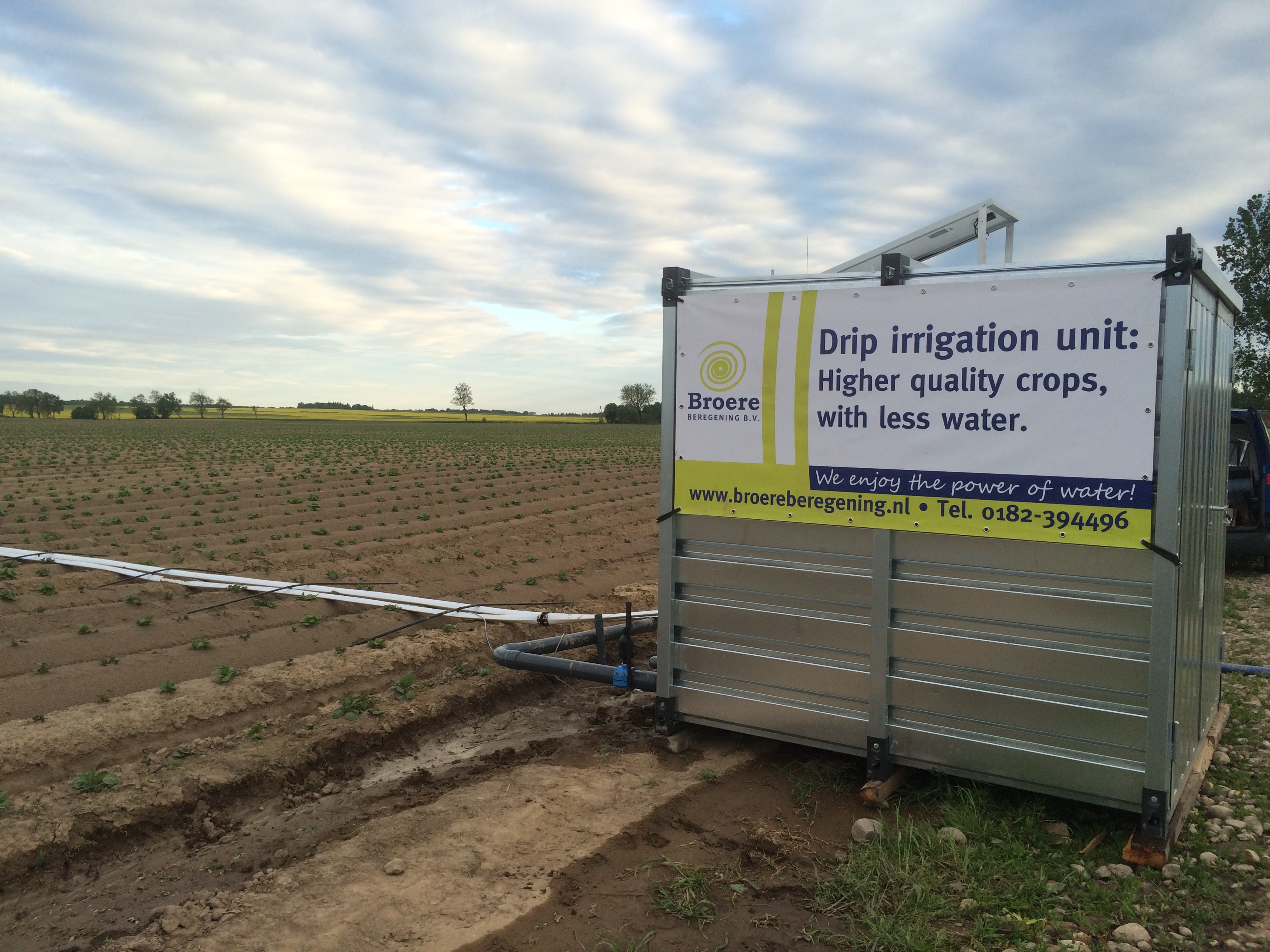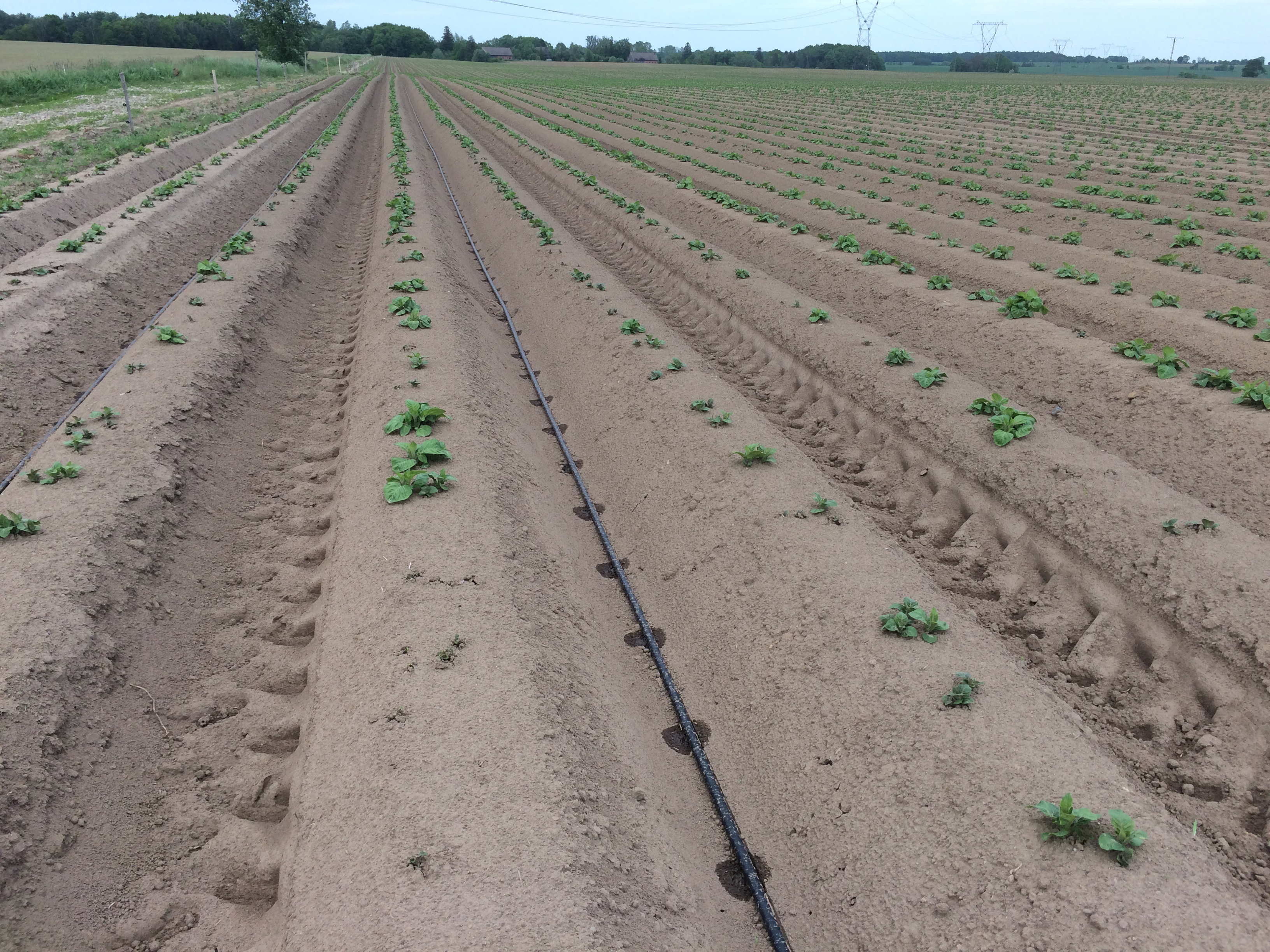Water storage
Broere Hortitech has two ways to store water. The silo and the bassin. Depending on the situation the choice is made to build a silo or a bassin. On this page we will discuss the characteristics of both options.
Introduction
Water storage silo’s are on a lot of places a pleasant and the most fitting solution to store water. Easy to realize, a limited building time and available in al lot of sizes.
Inspection
Newly placed silo’s have to be inspected after seven years. When a leakage has occurred before that time, it has to be repaired immediately and the silo has to be inspected every year from that point on.
Building a silo
The place in which the silo will be placed has to be free of obstacles an sharp objects. When the silo is placed on a concrete floor you have to be sure it can handle the weight of the silo. The bottom and the inside wall of the silo must be executed with a protection cloth. A silocloth will be placed on top of the protection cloth using stainless steel cable and a rattle. The silo cloth is resistant to toxins. When building the silo the temperature outside should be at least 10°C. In the winter it’s best to keep the silo half full.
Measurements
Placing: can be placed in the ground or anchored to a correctly founded concrete floor.
Diameter silo (mtr.): 1.82 / 2.73 / 3.64 / 4.55 / 5.46 / 6.10 / 6.37 / 7.28 / 7.85 / 8.19 / 9.10 / 10.01 / 10.92 / 11.83 / 12.75 / 13.66 / 14.57 / 15.48 / 16.39 / 17.30 / 18.21 / 19.12 / 20.03 / 20.94 / 21.85 /22.76 /23.67 / 24.58 / 25.49 / 26.40 / 27.31 / 28.22 / 29.13 / 30.04 en 30.95 mtr.
Height silo (mtr.): 1.59 / 2.36 / 3.12 of 4.64 mtr. The bigger diameters have a limited height.
gross volume silo (m³): 4 m3 tot 1795 m3
Coating dark green: none, bottom ring, if needed whole silo
Cover: This is optional and can be realized up to 6.5 meters high.
Desired size:
The storage volume is very dependent on the needs of the company and the wishes of the local authorities. In the last few years longer periods of droughts need to be bridged. Depending on your cultivation 3 to 12mm of water evaporates every day per. This is equivalent to 30 to 120m³ per hectare per day. Let’s assume 7mm of water evaporates every day on average. If we need to bridge a period of 6 weeks we need to have at least 6 weeks x 7 days x 70m³ of water stored. This equates to 2940m³ of water per hectare or 1190m³ per acre. On average the evaporation rate inside a greenhouse is about half of a field outside and in a shade hall it is 1/3 to 2/3 of a field outside.
The recirculation ratio/clean water ratio in a tree nursery that we advise is 1/5.
Preloading the dikes:
Each surface has its oddity’s. Over the years we have come to know all of them. The important thing when building the dikes of a basin is that the soil where the dikes will be made should be preloaded. When the dikes are built on preloaded soil they are less likely to sink and will remain stronger.
Building the dikes:
Preferably this is done with an experienced crane operator which often worked to specific surface. We have a team of subcontractors who are all very experienced and deliver an outstanding job time after time.
Drainage/Degassing:
Most of the time basins are dug to approximately 1 meter below ground level. Depending on the groundwater level a drainage system may be necessary. In peaty areas the drain will placed in such a way that it takes care of the degassing as well. To degas the soil a blind drain is placed and will be run op to the surface.
Protection cloth:
If the surface has ground with sharp rocks or other sharp objects the soil should be inspected and those objects should be removed. Just in case of punctures we still advise to use a non-woven protective blanket to protect the foil.
Foil:
In most occasions we choose basin foil from Albers Alligator. The PE variant so called: Polyextra. This foil has a very durable composition. The specific composition of the PE remains flexible and elastic. In specific cases, we also work with generic foil.
Protecting the foil against sunlight:
Sunlight works very aging for all plastics. Therefore it is desirable to protect the foil from sunlight. We do this through applying a talus canvas of > 200gram/m2. It hangs in the tank to about 75 cm from the bottom. At the bottom of the talus clothing a tile seam is created, in this we place street tiles. This prevents that the talus cloths are susceptible to the wind.
Anti-algae provisions:
It is recommended that a recirculation tank is provided with a cover. This cover reduces the sunlight in the water. As a result algae growth is will be almost prevented. These covers can be placed on new basins and existing basins as well.
Implementation:
Groundwork will be executed only in periods that the ground “lives,” generally from the end of march to beginning of October. The pipe’s concerning filling ducts and suction floaters will be placed during the realization of the basin. Its best to always place a valve on the suction pipe. When the foil needs to be laid it is usual that the customer helps out by letting some of his employees help for about one hour.


